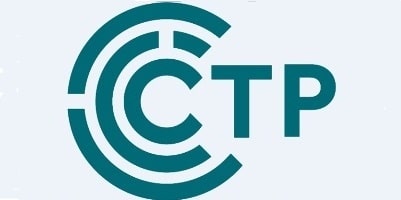5 steps to improve your customer services accessibility or how to create an accessible-for-all customer contact centre operations – Rick Kirkham, Founder and Managing Director, Customer Touch Point
Ensuring the accessibility of customer services and contact centre operations is no easy task. Yet it’s vital to get this right for several reasons. So what is accessibility? Why is it so important? And what practical steps can companies take to achieve it.

Why accessibility is important
Accessibility means ensuring that customers with disabilities or vulnerabilities such as a visual, hearing, or speech impairment, learning disabilities, or neurological limitations are still able to use your services.
According to the disability organisation Purple, 19% of the UK population have a registered disability or accessibility need. That’s almost one in five people. While there is a moral case for increasing accessibility, there’s also a huge opportunity cost to businesses of not doing so. Purple estimates that banks and building societies are losing £935 million per year – and energy companies £44 million per year – by not being accessible enough.
There is also a legal obligation for firms to accommodate those with accessibility issues under the 2010 Equality Act. It’s important for companies to be able to identify potentially vulnerable customers and to make adjustments. Based on our experience of working with a variety of corporate clients and disability organisations, here are the top five steps companies should consider.
 Step 1: Have a corporate accessibility policy
Step 1: Have a corporate accessibility policy
An accessibility policy gives you a set of guiding principles, as well as sending a strong message that accessibility is important. For these principles to be truly effective you should apply them consistently across your organisation, including when bringing in any new processes or deploying any new technology.
When devising or revising your accessibility policy, carry out research to understand who your vulnerable customers are. Find out what vulnerabilities they may have and what moments there are in your customer journey that might be a barrier for them.
 Step 2: Use technology to enhance and improve the customer experience (CX)
Step 2: Use technology to enhance and improve the customer experience (CX)
How you use technology in your business has a major positive or negative impact on how your vulnerable customers interact with you. When it comes to using technology to improve CX accessibility and inclusion, our top recommendations are:
– To improve telephone menus by making the language clear, well-articulated, and spoken at a steady pace.
– To install number recognition software that automatically re-routes to a live agent for those with accessibility needs.
– To consider voice and text analytics that indicate any accessibility or vulnerability needs in real time.
Specific examples of accessible CX technologies that can help improve the experience of vulnerable customers include:
– Connected, dynamic FAQs that display only relevant FAQs at the right time for the topic or web page the customer is viewing at the time.
– Omni-channel Contact Centre-as-a-Service (CCaaS) platforms that connect all your contact channels into a single view for your contact centre agents.
– Visual Interactive Voice Response (IVR) that transposes your IVR menu into a visual menu that displays on a smartphone. It offers ene-to-end automation, multi-channel delivery, and a fraction of the cost of traditional telephony, while having an average 80% containment rate – customers who are cable to self-serve successfully.
There’s much more information on accessible CX technologies than we have space for in this article, so for a more in-depth analysis, check out our on-demand webinar on Customer Services Accessibility.
 Step 3: Review and improve your customer journey design
Step 3: Review and improve your customer journey design
Research commissioned by Ofcom shows that disabled people regularly experience difficulty dealing with call centres. This is bad for them and for you.
If a customer is stressed when trying to navigate your customer journey, they won’t engage with it calmly. Instead, they’ll skip steps to get through to someone who can solve their problem as quickly as possible. They are also far more likely to come through to live agents in an aggravated state.
Customer journey design needs to be intuitive and engaging. That way, customers remain calm and relaxed. From our experience of working with major corporates, if you give customers the opportunity to self-serve, they will solve their challenge themselves.
Even if they still need to come through to a live agent, better customer journey design will tend to put the customer in a better frame of mind, which results in faster resolution and shorter calls.
When reviewing your customer journey design, keep the following guidelines in mind:
– Be as clear as possible with your language and instructions.
– Allow enough time for people to respond.
– Give the option to repeat.
– Always give a route out of a self-serve journey so that people can contact a live agent if they need or want to.
 Step 4: Empower your agents to recognise and accommodate accessibility issues
Step 4: Empower your agents to recognise and accommodate accessibility issues
According to the Direct Marketing Association, only 4% of contact centre staff know when they are speaking with a vulnerable customer.
Agents themselves are keen to do the right thing and make a difference but they need the right tools and strategies to make their job easier. These include:
– Training to empower them to recognise signs of vulnerability, know what questions to ask, and how to adapt the conversation.
– Enacting a policy of logging accessibility needs on your CRM system.
– Having access to alternative services, such as visual IVR, sign language services, and large print or brail statements and bills.
 Step 5: Encourage feedback from customers and contact centre agents
Step 5: Encourage feedback from customers and contact centre agents
Gathering feedback from customers and your live support agents will help you spot problems and replicate success. When it comes to your customers, consider using customer satisfaction surveys, net promotor scores, and monitoring customer effort or sticking points on your customer journey.
When conducting surveys, remember to ask about any issues, for example:
– How easy was it to resolve your query today?
– What did you find difficult or time consuming to do?
It’s important also to add questions with freeform comment boxes so customers can express themselves in their own words. This will help you to uncover issues you may not have anticipated, and to be able to articulate them in the language of your customers. It can also help you to crowdsource potential solutions from a customer perspective.
Transcribe and analyse the feedback you get, and make sure to share it across the business. And, while surveying customers is vital, it is equally important to get regular feedback from your agents. In our experience, this can also add a great deal of value, and often help you to spot and resolve issues early.
Understanding your customers’ point of view is the key to success
A strategy encompassing all five of these steps will help you create a best-in-class contact experience for your customers. Although improving accessibility is the right thing to do, building a business case and making it commercially beneficial is more likely get buy-in and support across the business.
Getting an independent third-party view of how to leverage or revise your existing CX technology can also add tremendous value, particularly when it comes to making the most of your CX budget. Doing this can help you build accessibility requirements into your procurement processes and work out which CX technologies would give you the best ROI.
Whichever way you decide to improve the accessibility of your contact centre experience, the more you are able to view the experience from your customers’ point of view, the more likely you are to be successful.

To find out more about Accessibility in Customer Services and book your CX Accessibility Audit Click Here
Customer Touch Point specialises in long-term and instant impact customer experience solutions for organisations worldwide, providing the tools and support they need to deliver effortless customer experiences.

For additional information on view their Company Profile
 Step 1: Have a corporate accessibility policy
Step 1: Have a corporate accessibility policy



